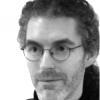Aging negatively impacts muscle regeneration for reasons that remain incompletely understood. This incomplete understanding exists in part because muscle regeneration involves a complex set of interactions between different cell types that shifts over time as the response to injury progresses. It requires a great deal of effort to build a clear picture at the level of cell biochemistry. Nonetheless, it is evidently the case that aging impairs the activity of muscle stem cells, it impairs the niches in which those cells reside, it alters the behavior of immune cells for the worse, and so forth. There are starting points.
Similarly, one can point to the chronic inflammation of aging and its ability to impairs regeneration, interfering in the normal short-term inflammatory signaling that follows injury. One can point to all of the known causes of aging and suggest that addressing them will improve the situation. That said, most research groups take the challenge to be the identification of specific regulatory mechanisms that drive maladaptive reactions on the part of cells in injured aged muscle. The next step is then the development of therapies that sabotage those mechanisms. This sort of approach doesn't fix underlying damage, but can dampen the response to that damage.
Today's open access paper is an example of this sort of research. The authors report on a mechanism by which macrophages in aged muscle are impaired in ways that reduce the capacity for regeneration. There is an age-related reduction in levels of selenoprotein P in these macrophages. Experimental approaches to inhibit and boost selenoprotein P levels are shown to reduce and increase regenerative capacity respectively. The role of selenoprotein P in cellular biochemistry is not well understood, however. It is thought to be an antioxidant molecule, but may well have other functions yet to be identified. So it is a little unclear as to what exactly is going on under the hood.
Immune aging impairs muscle regeneration via macrophage-derived anti-oxidant selenoprotein P
Adult skeletal muscle is a plastic tissue and can regenerate after trauma- or exercise-induced myofiber damage via muscle stem cells (MuSCs), that exit quiescence, expand, differentiate, and eventually fuse to form new functional myofibers. Although MuSCs are absolutely required for skeletal muscle regeneration, their surrounding non-myogenic counterparts in the local niche coordinate inflammatory signals and tissue remodeling to sustain adult myogenesis. However, this process is altered in a variety of conditions, including muscle diseases, some metabolic conditions such as diabetes, and aging.
Failure of mounting an efficient skeletal muscle regeneration in aged organisms has been attributed to both intrinsic alterations of MuSCs and modified environmental cues. Since they are the support of muscle regeneration, a variety of intrinsic alterations have been identified in the old MuSCs, including changes in epigenetics and signaling, as well as alterations in metabolism and proteostasis. Extrinsic alterations have also been described including alterations in the number or in the nature of immune cells, in some properties of fibro-adipogenic precursors (FAPs), and in extracellular matrix (ECM) composition, as well as systemic factors. However, if cell-cell interactions are well-described in the adult regenerating muscle, the impact of aging on the molecular regulation of cell components of the MuSC niche and on cell-cell interactions during regeneration is still poorly known.
Here, we compared and analyzed the time course of the various cell types constituting the MuSC niche during muscle generation in young and old mice. Aging alters the expansion of all niche cells, with prominent phenotypes in macrophages that show impaired resolution of inflammation. RNA sequencing uncovers specific profiles and kinetics of genes and molecular pathways in old versus young muscle cells, indicating that each cell type responds to aging in a specific manner. Moreover, we show that macrophages have an altered expression of Selenoprotein P (Sepp1). Macrophage-specific deletion of Sepp1 is sufficient to impair the acquisition of their restorative profile and causes inefficient skeletal muscle regeneration. When transplanted in aged mice, bone marrow from young wild type mice, but not Sepp1 knockout mice, restores muscle regeneration. This work provides a unique resource to study MuSC niche aging, reveals that niche cell aging is asynchronous and establishes the antioxidant Selenoprotein P as a driver of age-related decline of muscle regeneration.
View the full article at FightAging









































